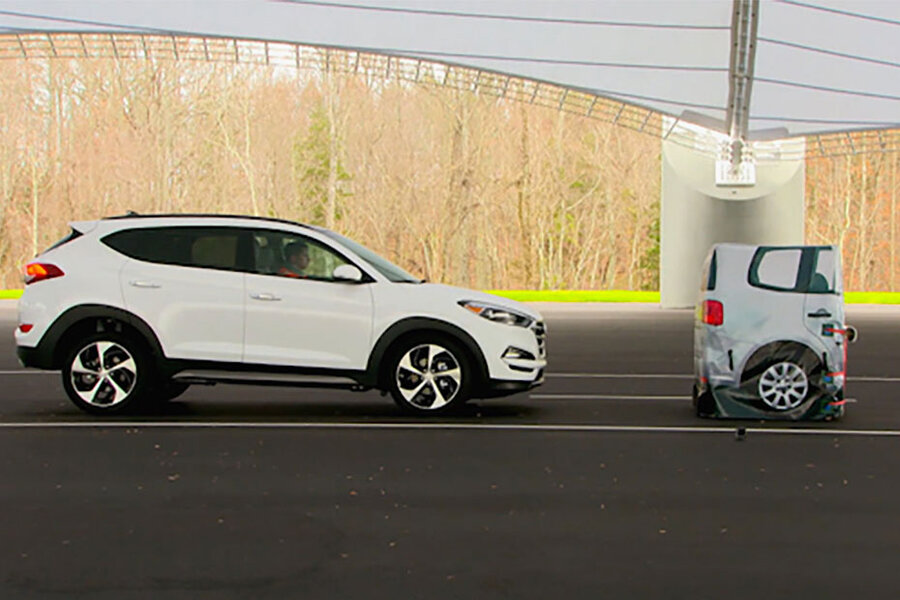Why automakers agreed to add automatic braking systems to all cars
Loading...
What if your car could sense when its driver had lost control on the road and braked by itself before a crash?
Automakers are set to announce Thursday that by 2022, nearly all US cars will take advantage of automatic emergency brake technology, in one of the biggest coups for auto safety since the universal implementation of seat belts.
The deal, forged between automakers and the National Highway Traffic Safety Administration, will require manufacturers to equip all but specified, older car models with automatic braking systems, according to Associated Press sources.
The move is a major step forward in improving vehicle safety, say auto industry insiders. The last development of this magnitude in automobile safety was electronic stability control.
"That's kind of a new frontier, I think, in automotive safety," Jake Fisher, the chief of auto testing for Consumer Reports magazine, told AP.
Automakers began building various iterations of auto braking into cars in 1997. Early versions reduced rear-end crashes by 8 percent, but automakers have struggled to integrate autobrakes into all car systems, according to a study for the US Department of Transportation. The technology employs cameras and radar to "see" obstacles in a car's path and can slow or stop the car if a driver fails to do so. The hope is that mandatory implementation by a fixed deadline will inspire technological innovation.
"It's the first time we're seeing a system that will see a problem and react for you," Mr. Fisher told the AP.
Safety advocates estimate that fully automatic braking could have reduced crashes in 2013 by 13 percent, or 700,000, according to analysis by the Insurance Institute for Highway Safety comparing police crash data among the same car models with and without auto-braking.
"As this technology becomes more widespread, we can expect to see noticeably fewer rear-end crashes," David Zuby, chief research officer for the Insurance Institute for Highway Safety said in a press release. "The same goes for the whiplash injuries that often result from these crashes and can cause a lot of pain and lost productivity."
The impact on crashes varies by system. Forward collision warning can reduce crashes by 23 percent, while automatic braking can reduce crashes by 40 percent.
Pointing out that rear-end collisions are among the most common crashes, a study by the Association for the Advancement of Automotive Medicine used insurance claims from Sweden to study the effectiveness an auto-brake system. Drivers of a cars fitted with auto-brake filed insurance claims after a crash 23 percent less frequently than did drivers of the same car without auto-brake, according to the study.
This report contains material from The Associated Press.








